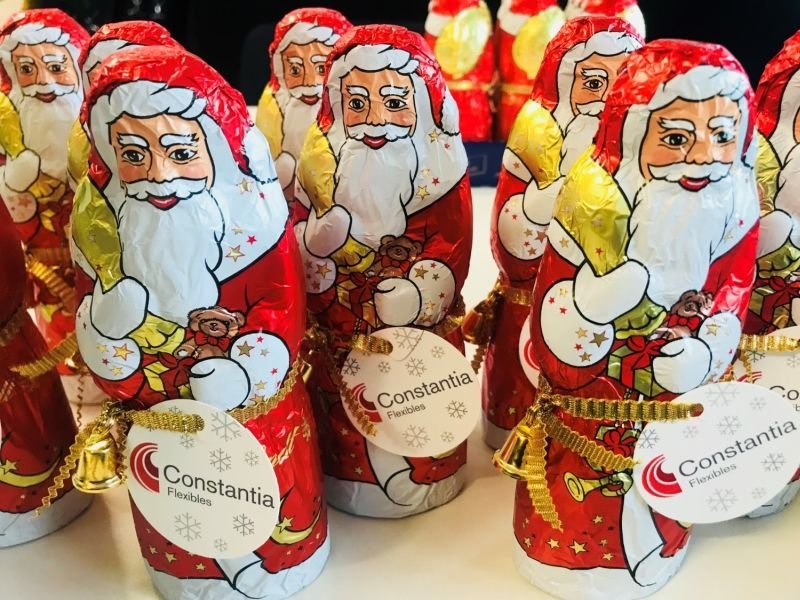

An European Aluminium Foil Association report says over 150 million Santa Clauses are produced annually for the holiday season in Europe. They are produced in Germany and also in other countries like Austria. Based on an average size of 0.025 square meters per figure, this is more than 3,750,000 square meters.
Almost all of the chocolate hollow figures are wrapped in shiny and colourful aluminium foils to add the festive iconic look. According to EAFA, the aluminium foil offers complete protection to the chocolate Santas from the light and other external influences.
{alcircleadd}
“The deadfold effect of the aluminum foil allows the foil to be wrapped tightly around the chocolate product during packaging and remains so in the supermarket or other points of sale until it arrives at the consumer for the ultimate moment of consumption. After that the aluminium foil can move on to its next life when properly collected and recycled. In Germany the average recycling rate of aluminium packaging is 87 per cent,” says Marika Knorr, Deputy Executive Director at the European Aluminium Foil Association.
The first Santa Claus figures were made from solid chocolate in around 1820. Approximately 20 years later, they were produced with hollow bodies and they are produced in the same form today. European packaging companies have been producing aluminium printed foil and film for Santa Clauses, Easter bunnies and other chocolate figures.
Aluminium foils and chocolate Santa Clauses have a long term association. The process of industrial production of aluminium rolls and further processing and rolling of foils has been more than 100 years old. Since then, chocolate producers in Europe and the USA have been wrapping their products in aluminium foil for quality preservation and cosmetic advantage.
In addition to Europe, many Santas wrapped in aluminium foil are exported to the United States, Australia and even to Japan during the festive season.
Responses








